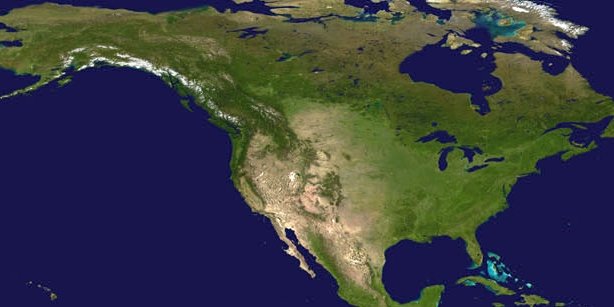

Even with the storm hundreds of miles offshore, Hurricane Ernesto was still being felt Saturday along much of the U.S. Eastern Seaboard, with dangerous rip currents forcing public beaches to close during one of the final busy weekends of the summer season.
Hurricane specialist Philippe Papin from the National Hurricane Center said Ernesto was a "pretty large" hurricane with a "large footprint of seas and waves" affecting the central Florida Atlantic coastline all the way north to Long Island in New York, with tropical-storm-force winds extending outward up to 230 miles from the storm’s center.
Last week, Ernesto caused damage in Puerto Rico and the U.S. Virgin Islands as it passed north of the region as a tropical storm, managing to knock out power to hundreds of thousands of residents. At one point, 23 hospitals were operating on generators. Schools and numerous roads were also closed. At the outage's peak, 750,000 customers were without power, with rivers across Puerto Rico swollen after nearly 10 inches of rain.
In western Bermuda, Ernesto made landfall during the early morning of Saturday, Aug. 17, 2024, as a Category 1 hurricane with 85 mph sustained wind and gusts near 100 mph, then downgraded to a tropical storm, but winds had picked up again and the system became a hurricane. The storm’s barrage of strong winds led to relatively widespread but minor wind damage to structures and trees. At the peak, about 75 percent of Bermuda Electric Light Co. customers were without power.
On much of the U.S. East Coast, the storm caused dangerous surf and damaged property throughout the region. Human-caused climate change and a rise in sea levels is leading to greater flood threats, even from distant storms. Three deaths are being blamed on dangerous surf and rip currents caused by Ernesto, all from swimmers who drowned off the coast of the Carolinas.
Tens of thousands of people in the United States are rescued from rip currents every year and about 100 die from being caught in them. As of mid-August, 30 people had died in rip currents this year, according to preliminary National Weather Service data.
Large waves of 6 to 10 feet in height, on top of a higher than usual tide, knocked an unoccupied house off its foundation in North Carolina’s Outer Banks at Rodanthe. The National Park Service reported that many other homes also sustained minor damage, and it has since closed a section of the beach. The low-lying barrier islands are increasingly vulnerable to storm surges and to being washed over from both the Pamlico Sound and the sea as the planet warms.
Ernesto is the fifth named storm so far of the Atlantic hurricane season, which has already proven to be historic after Beryl reached record strength at the beginning of the season in above-average temperatures of the Gulf of Mexico—the fifth named storm typically doesn't form until Aug. 22.
The storm was about 590 miles south of Halifax, Nova Scotia, on Sunday morning, moving north-northeast at an accelerated speed of 16 mph with maximum sustained winds of 70 mph. As of 5 a.m. Tuesday, Aug. 20, the storm was 150 miles east-northeast of Cape Race, Newfoundland. Ernesto was reclassified as a "powerful post-tropical cyclone" over the North Atlantic just before 11 a.m. EDT on Tuesday.
This season follows an overly active year, with 20 named storms — including an early storm later given the official name of “Unnamed.” It was the eighth year in a row to surpass the average of 14 named storms. Only one hurricane, Idalia, made landfall in the United States.
The warm ocean temperatures that fueled last year’s season returned even warmer at the start of this season, raising forecasters’ confidence that there would be more storms this year. The heightened sea surface temperatures could also strengthen storms more rapidly than usual. Hurricanes need a calm environment to form, and, in the Atlantic, a strong El Niño increases the amount of wind shear — a change in wind speed and/or direction with height — which disrupts a storm's ability to strengthen. Without El Niño this year, clouds are more likely to tower to the tall heights needed to sustain a powerful cyclone.
NOAA satellites provide vital information for forecasting hurricanes and monitoring the location, movement and intensity of storms. The GOES-16 and GOES-18 geostationary satellites continuously view the entire Atlantic and eastern/central Pacific hurricane basins to provide real-time tracking and monitoring of tropical cyclones as well as the environmental conditions that cause them to form.
By imaging a storm as often as every 30 seconds, these satellites help forecasters more easily discern the movement of cloud features and provide greater confidence in estimating the center of the storm. GOES-16 and GOES-18 also provide a detailed look at the storm properties of a hurricane, including cloud top cooling, central pressure, and convective structures as well as specific features of a hurricane’s eye, wind estimates, and lightning activity. This information is critical to estimating a storm’s intensity.
The Joint Polar Satellite System’s (JPSS) polar-orbiting satellites, the NOAA/NASA Suomi-NPP, NOAA-20, and NOAA-21, capture data over each spot on Earth twice a day. They measure the state of the atmosphere by taking precise measurements of sea surface temperatures and atmospheric temperature and moisture, which are critical to securing storm forecasts several days in advance. JPSS instruments provide data that are particularly useful in helping forecasters predict a hurricane’s path 3 to 7 days out.
